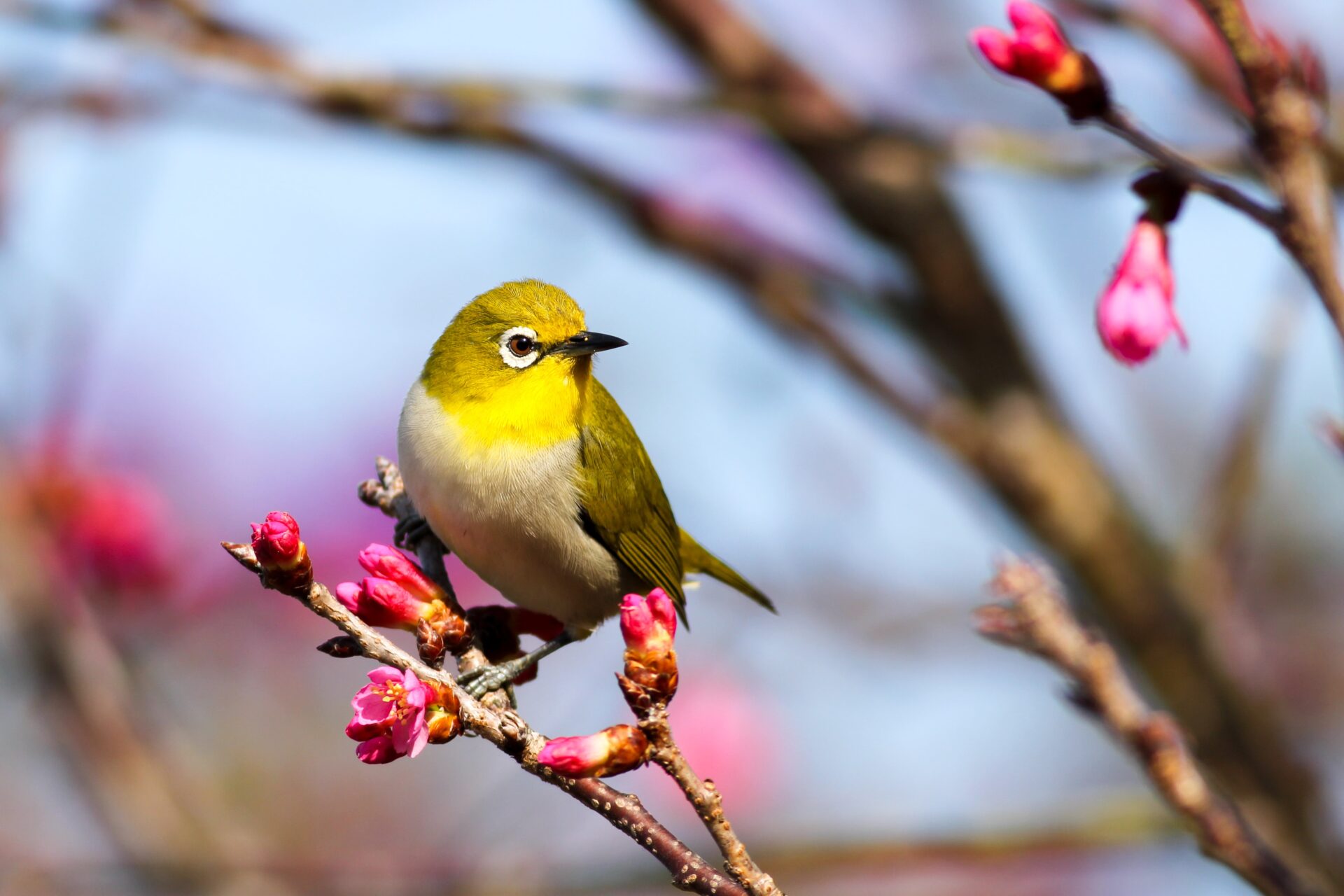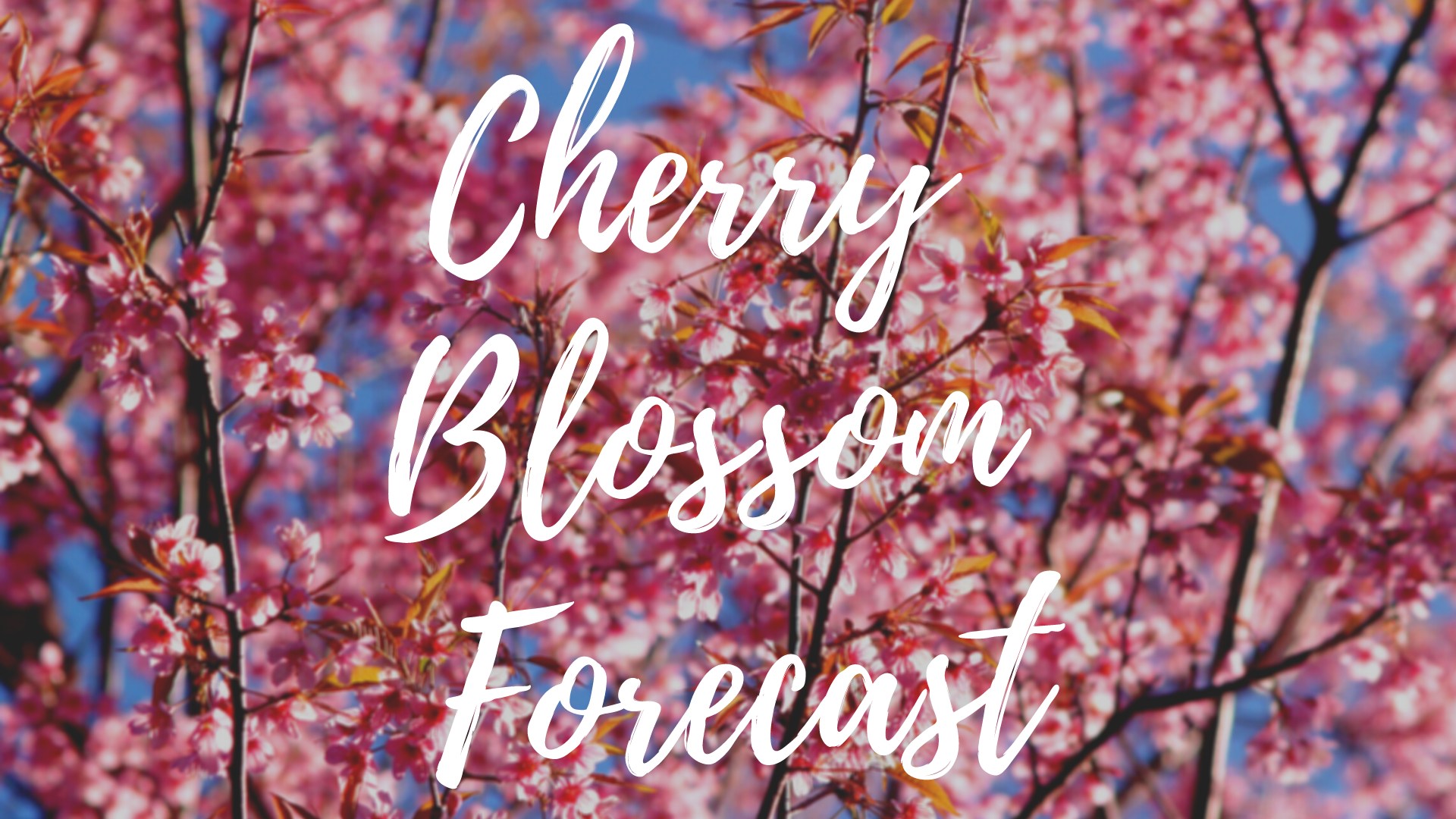
Miho Shimizu is a Japanese freelance writer settled in Shizuoka with her husband and two rabbits. Fascinated with travelling at the age of 18, she has spent most of her long holidays exploring incredible spots around Japan. Also love to listen to music, draw, and read novels over a cup of green tea.
This post may contain some affiliate links. When you click through and make a purchase we may receive some commission, at no extra costs to you.
Japan has a large variety of beautiful flowers. For most people, what probably comes to mind first is sakura, or cherry blossoms, the lovely pink flower which is known as Japan’s symbolic flower that blooms in the spring season. But did you know there is a similar, equally beautiful flower that people often mistake for sakura? The plum blossom, known as ume (梅) in Japanese, looks very similar to the sakura flower and also blooms in the spring.
- What are plum blossoms?
- Difference between cherry blossoms and plum blossoms
- When do plum blossoms bloom?
- Plum Blossom Viewing Spots in Japan
- 1. Kairakuen Garden (Ibaraki)
- 2. Bairin-ji (Fukuoka)
- 3. Atami Plum Garden (Shizuoka)
- 4. Inabe City Agriculture Park (Mie)
- 5. Kitano Tenmangu Shrine (Kyoto)
- 6. Tsukigase Plum Valley (Nara)
- 7. Ano Plum Grove (Nara)
- 8. Korakuen (Okayama)
- 9. Ritsurin Garden (Kagawa)
- 10. Furo-en Plum Garden (Yamanashi)
- 11. Dazaifu Tenmangu Shrine(Fukuoka)
- Plum Blossom Viewing Spots in Tokyo
- Japan Wonder Travel Tours
- Other articles you might like
What are plum blossoms?
Like sakura flowers, the small pretty flower comes in different varieties but typically plum blossoms have 5 petals, no leaf stalks, and a sweet fragrance. They come in colors ranging from white to dark pink, with most of them colored pink. The plum blossom is said to symbolize perseverance, as they have the ability to bloom in the cold.
Difference between cherry blossoms and plum blossoms
Even though they may look fairly similar, cherry and plum blossoms are actually pretty different. They bloom at different times, but they also differ in shape and in the way that the flowers are joined to the tree branch. If you want to learn more about the differences, have a look at our article below.
When do plum blossoms bloom?
Plum blossoms start to bloom earlier than sakura do. The plum blossom season in Japan is generally from mid-February until the end of March but can differ from region to region. Because they blossom earlier than sakura, for many people this is the mark of the arrival of spring and warmer weather. Please have a look at each place below for an idea of the plum blossom forecast for 2024.
Vacationing during the plum season is a great way to avoid the big crowds and offers a great opportunity to enjoy the early part of the spring season in Japan in a unique way. There are various locations across Japan where you can admire the plum blossoms to the fullest. Here is our list of the 15 best places to see plum blossoms in Japan!
Plum Blossom Viewing Spots in Japan
1. Kairakuen Garden (Ibaraki)
Kairakuen is a beautiful Japanese-style garden located in the heart of Mito city, Ibaraki prefecture. Built in 1842, it is ranked as one of the Japan’s three great gardens along with Korakuen in Okayama prefecture, and Kenrokuen in Ishikawa prefecture. This garden was built by Tokugawa Nariaki, a local daimyo, during the Edo Period as a place for everyone to enjoy. The lovely Kairakuen is widely appreciated as a famous plum blossom viewing spot with approximately 3,000 plum trees of 100 different varieties which generally start to bloom in late February. From mid-February through late March, the Mito Plum Blossom Festival is held every year, attracting many visitors from all around Japan.
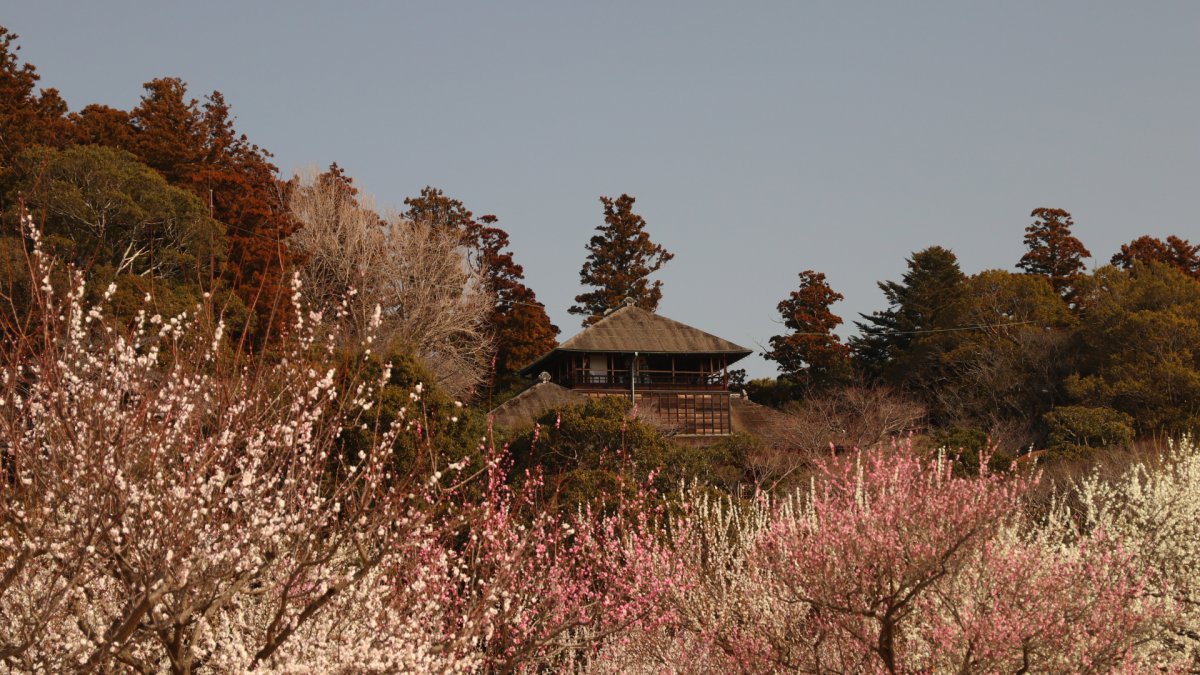
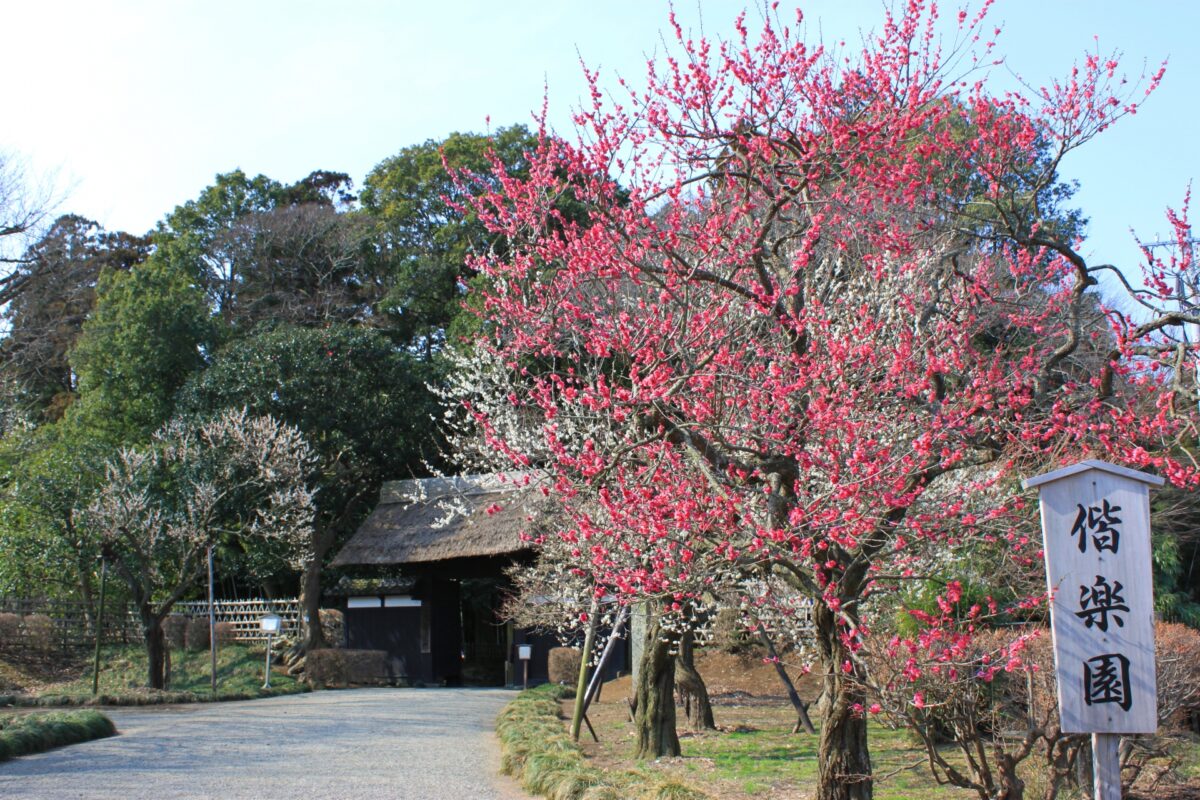
Kairakuen Garden
6am – 7pm (mid-February to September)
7am – 6pm (October to mid-February)
Entrance fee: ¥300
Best time for plum blossoms: February to mid-March
Mito Plum Blossom Festival 2024
February 10 – March 17
How to get to Kairakuen Garden
From Tokyo, take the JR Hitachi-Tokiwa train to JR Mito Station. Take a bus from the north exit of Mito Station that is bound for Kairakuen bus stop(15 min).
2. Bairin-ji (Fukuoka)
If you have the chance to travel to Fukuoka during plum blossom season, visiting Bairinji to admire the beautiful plum blossoms in full bloom is a great option! The small Buddhist temple, which belongs to the Rinzai Sect, is also nicknamed the temple of plums. A fitting nickname for a temple whose kanji “梅林” means plum blossom forest. The history of the temple dates back to 1621 when it was originally established by the Arima family who ruled the region for about 250 years through the Edo Period. This peaceful temple ground is home to 500 plum blossom trees of 30 different varieties which bloom into white, pink, and red plum blossoms! If you can’t visit early in the plum blossom season, going there at the end of March will also be a great option for seeing cherry blossoms in full bloom.

Bairin-ji
Open 24 hours
Free admission
Best time for plum blossoms: late February – mid-March
How to get to Bairin-ji
About a 5 min walk from JR Kurume Station
3. Atami Plum Garden (Shizuoka)
Atami Plum Garden is a popular plum blossom viewing spot located in the eastern part of Shizuoka prefecture. The garden is widely known for having some of the fastest-blooming plum trees in Japan which start blooming as early as December! They boast some 500 plum trees of 60 different varieties, including some old trees that have been there for over 100 years. The best time of the year is from mid-January through the end of March, which is relatively long. This is because each kind of plum tree starts to bloom at a different time. If you visit this garden from early February to mid-March, you will also be able to enjoy early blooming sakura at some famous spots such as Kawazu and Shimogamo Onsen. In addition to the spring flowers, Atami Plum Garden is also famous for its’ long autumn foliage season.
Atami Plum Garden
8:30am – 4pm
Entrance fee: ¥300
Best time for plum blossom: mid-January to late March
Atami Plum Garden Plum Festival 2023
January 6 – March 3
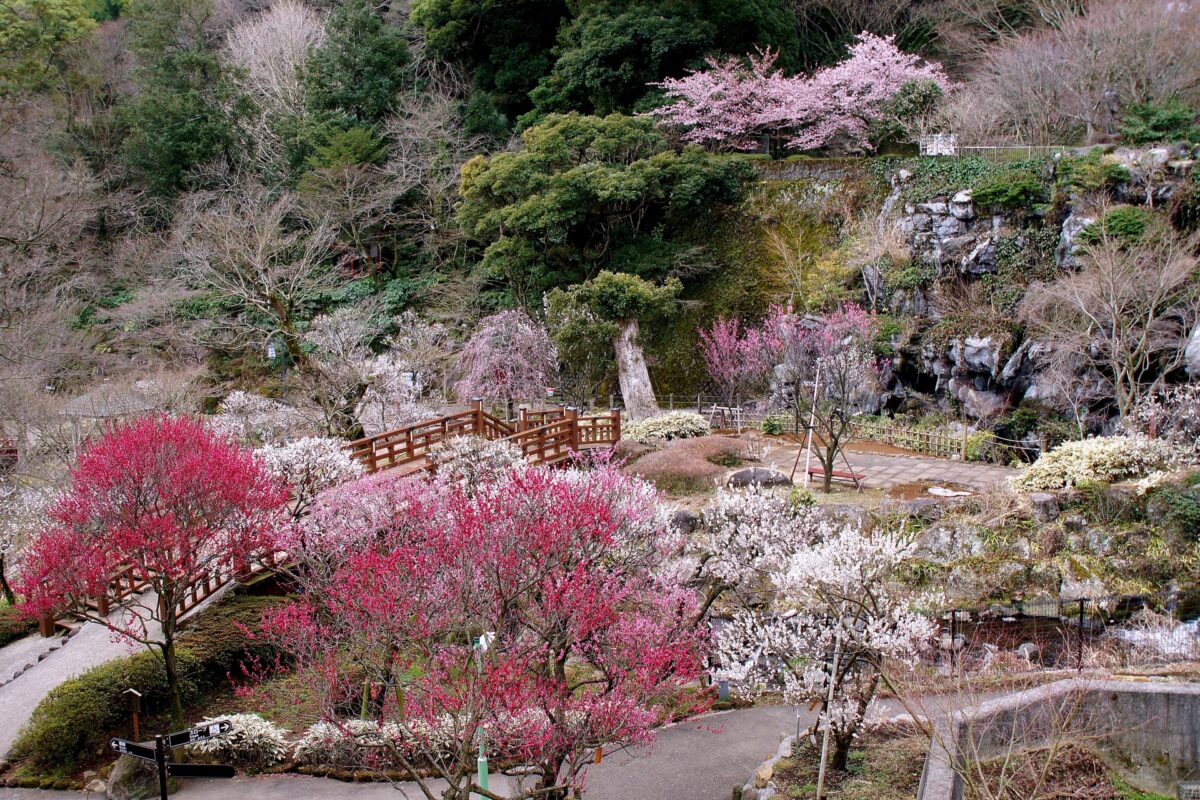
How to get to Atami Plum Garden
About 15min bus ride from JR Atami Station
4. Inabe City Agriculture Park (Mie)
Inabe City Agriculture Park is a public park which is located in Inabe city, Mie prefecture. It is widely recognized as one of the largest plum blossom viewing spots in the Tokai area which is comprised of Aichi, Mie and Gifu (and sometimes includes Shizuoka) prefectures in the central part of Japan’s main island. Nestled at the base of Suzuka mountain range, it is home to 100 varieties of some 4,500 plum trees which start to blossom from late February through mid-March! From the observation point overlooking the entire park and surrounding mountains, you can enjoy the great views of colorful patchwork created by pink, white and red plum trees along with the snow-capped mountains in the background! The park also hosts a plum festival in March every year.
Inabe City Agriculture Park
9am – 4pm
Entrance fee Plum Festival ¥500
Best time for plum blossoms: From late February to mid-March
Plum Festival 2024
Soon to be announced
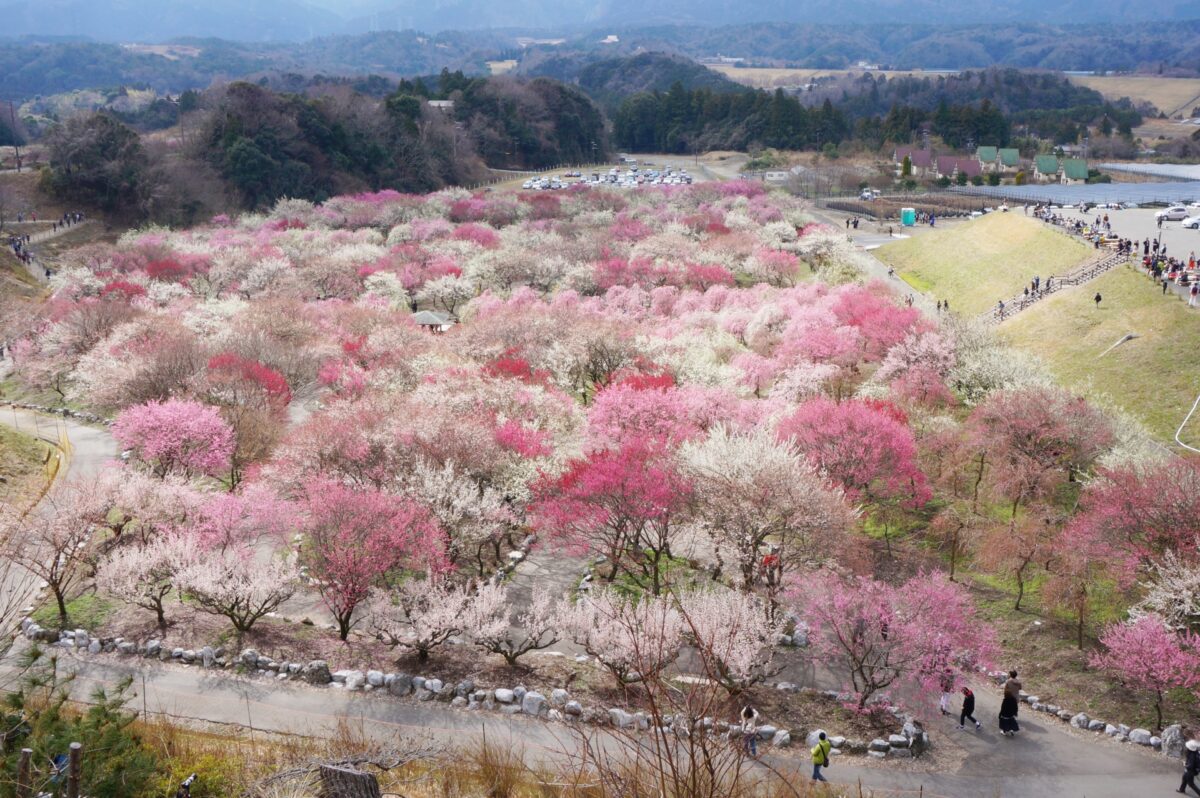
How to get to Inabe City Agriculture Park
From Kintetsu Kuwana Station, head to Nishi-kuwana station and take the Sangi Railway Hokusei Line, Get off at Ageki station and it is about a 20min taxi ride to Inabe City Agriculture Park
5. Kitano Tenmangu Shrine (Kyoto)
Kitano Tenmangu is a historic Shinto shrine located in the northern part of Kyoto city. This sacred shrine is dedicated to Sugawara no Michizane, a notable scholar back in the 9th century. The beautiful shrine structures are worth a visit any time of year, but it particularly attracts numerous visitors during the early spring season. From the beginning of February, some 2,000 plum trees comprising about 50 different varieties cover the shrine grounds and get filled with colorful plum blossoms. Every year, the Plum Blossom Festival (Baikasai Nodate Ochanoyu) is held on February 25th, a mass tea ceremony where you can enjoy traditional Japanese sweets and tea served by Geisha and Maiko.
Can’t visit the shrine in spring? Autumn is a great alternative, in fall the hundreds of maple trees in the Foliage Garden of Kitano Tenmangu Shrine are one of Kyoto’s best spots for autumn leaves!
Kitano Tenmangu
5am – 5:30pm
Free admission
Best time for plum blossoms: early February to late March
Plum Garden 2024
February 1 – the end of March
9am – 4pm
Admission 1,200 yen (adult) 600 yen (child)
*Green tea and sweets included

How to get to Kitano Tenmangu
From JR Kyoto Station, it is a 35 min bus ride to Kitano Tenmangu.
6. Tsukigase Plum Valley (Nara)
Tsukigase Plum Valley is a scenic natural attraction located in the northern part of Nara prefecture. It attracts numerous visitors every year as one of the most popular plum blossom viewing spots in the Kansai region. The Satsuki river runs through the beautiful mountainous valley which is home to approximately 10,000 plum trees that start to bloom in early February. As you take a stroll along the valley, you will be welcomed by the pleasant smell of plum flowers which also attracts small birds. In early April, about 3,000 Sakura trees are in full bloom, which also makes for incredible scenery.
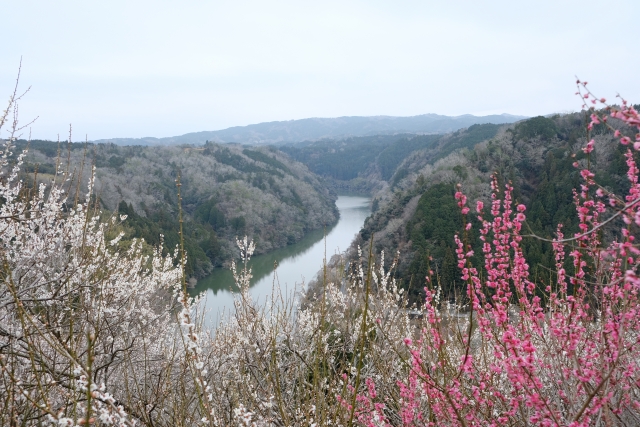
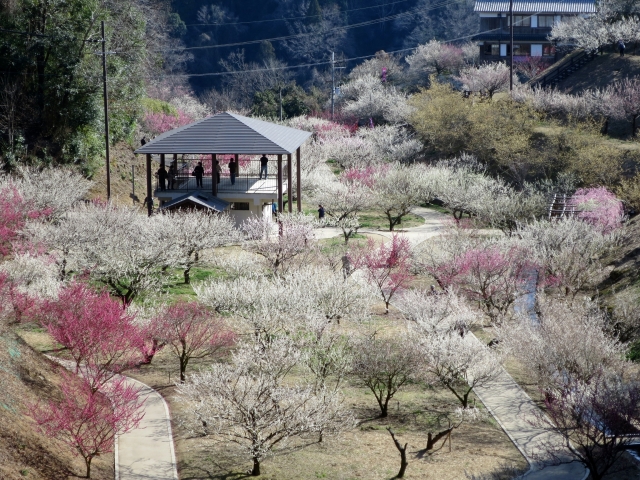
Tsukigase Plum Valley
Open 24 hours
Free admission
Best time for plum blossoms: mid-February to late March
Tsukigase Plum Valley Plum Festival
February 11 – March 24
How to get to Tsukigase Plum Valley
The valley isn’t well connected to the public transport, if you don’t have a (rental) car, take a train to the nearest station, JR Tsukigaseguchi Station. The plum grove is about 15 min from the station by taxi.
7. Ano Plum Grove (Nara)
Another must-visit plum blossom spot in Nara prefecture is Ano Plum Grove. From JR Gojo station, it is a 20 min bus ride to reach the peaceful mountainous area which is widely recognized as one of the most famous plum blossom viewing spots in Japan. The history of the plum grove in Ano is said to date back to the 14th century. The beautiful scenery is described in some poetry written by court nobles during that period. There are approximately 20,000 plum trees around the Ano area, which is twice as many as the number of plum trees in Tsukigase Plum Valley! From late February to late March, pink, white, and red plum flowers spread across the vast hillside, which is absolutely breathtaking.
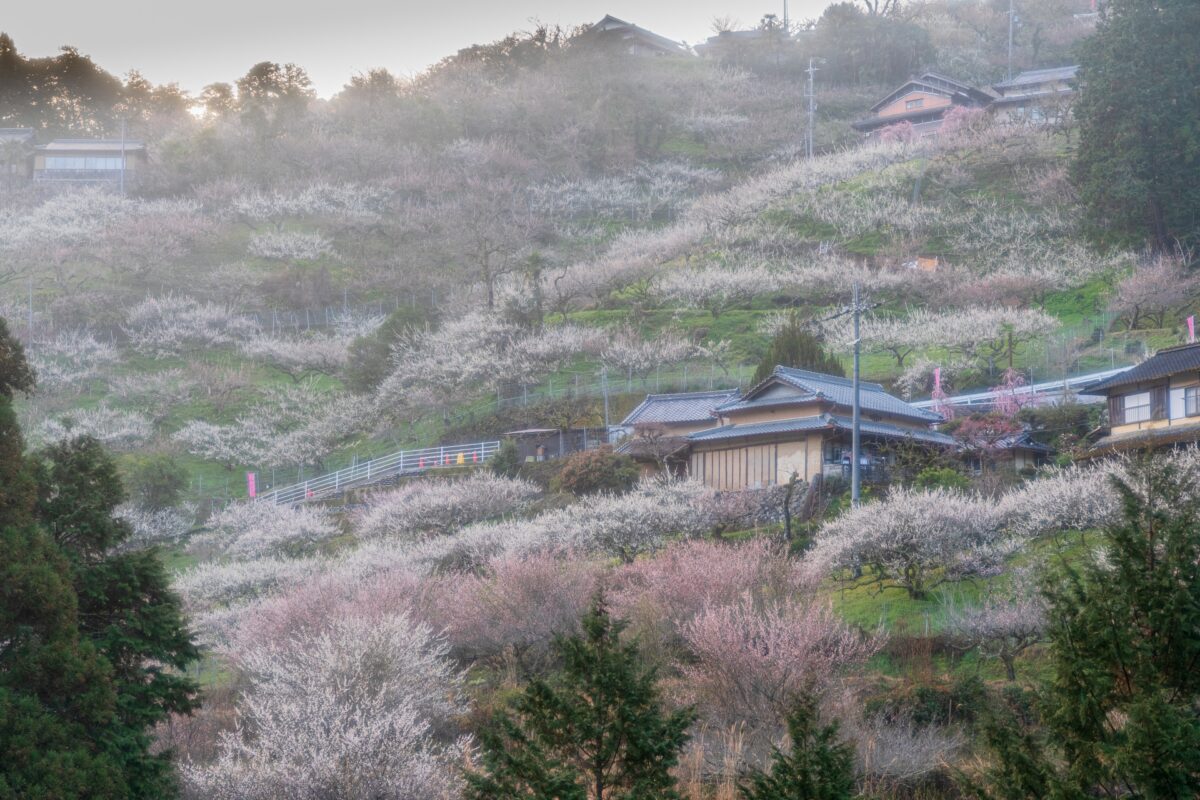
Ano Plum Grove
8.30am – 5pm
Free admission
Best time for plum blossoms: late February to late March
How to get to Ano Plum Grove
It is about 20 min from JR Gojo Station by bus
8. Korakuen (Okayama)
Korakuen is a scenic Japanese garden and one of the most popular tourist attractions in Okayama. Along with Kairakuen in Ibaraki prefecture, and Kenrokuen in Ishikawa prefecture, Korakuen is recognized as one of Japan’s three great gardens. It was originally built by Ikeda Tsunamasa, the second feudal load of the Okayama domain during the Edo Period. The garden is home to a wide variety of seasonal flowers and plants that can be enjoyed all year round. From early February through early April, it becomes a perfect spot to enjoy both plum and sakura blossoms. Okayama Castle is another popular tourist attraction that is easily accessible by crossing the Tsukimi bridge from the south exit of the garden!
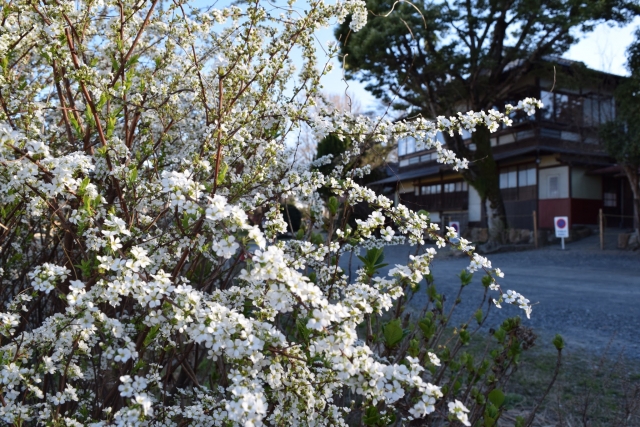
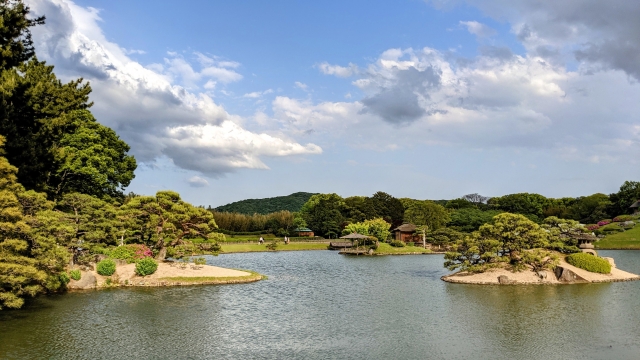
Okayama Korakuen
7.30am – 6pm (March 20 to September)
8am – 5pm (October to March 19)
Admission fee: ¥410 (garden only), ¥580 (combined ticket Okayama Castle)
Best time for plum blossoms: early February to early March
How to get to Okayama Korakuen
It is about 10min from JR Okayama station by bus.
9. Ritsurin Garden (Kagawa)
If you are planning to visit Shikoku region during your trip to Japan in the early spring season, Ritsurin Garden is a perfect spot to admire the beautiful plum blossoms! The construction of the garden started in the early 17th century by the feudal lord of Takamatsu clan. It is a Kaiyu-style garden, which is quite typical to the traditional Japanese gardens built during this period by powerful feudal clans. This style of garden typically has circulating pathways, which allow visitors to explore the garden easily. At the end of February, Ritsurin Garden Plum Festival is held every year. Although the number of plum trees there is relatively small compared to other plum blossom viewing spots, the scenic garden itself is definitely worth a visit! April is also a great time of year to enjoy sakura blossoms.
Ritsurin Garden
Opening times differ by month, generally from sunrise to sunset
Admission fee ¥410
Best time for plum blossoms: late February to early March
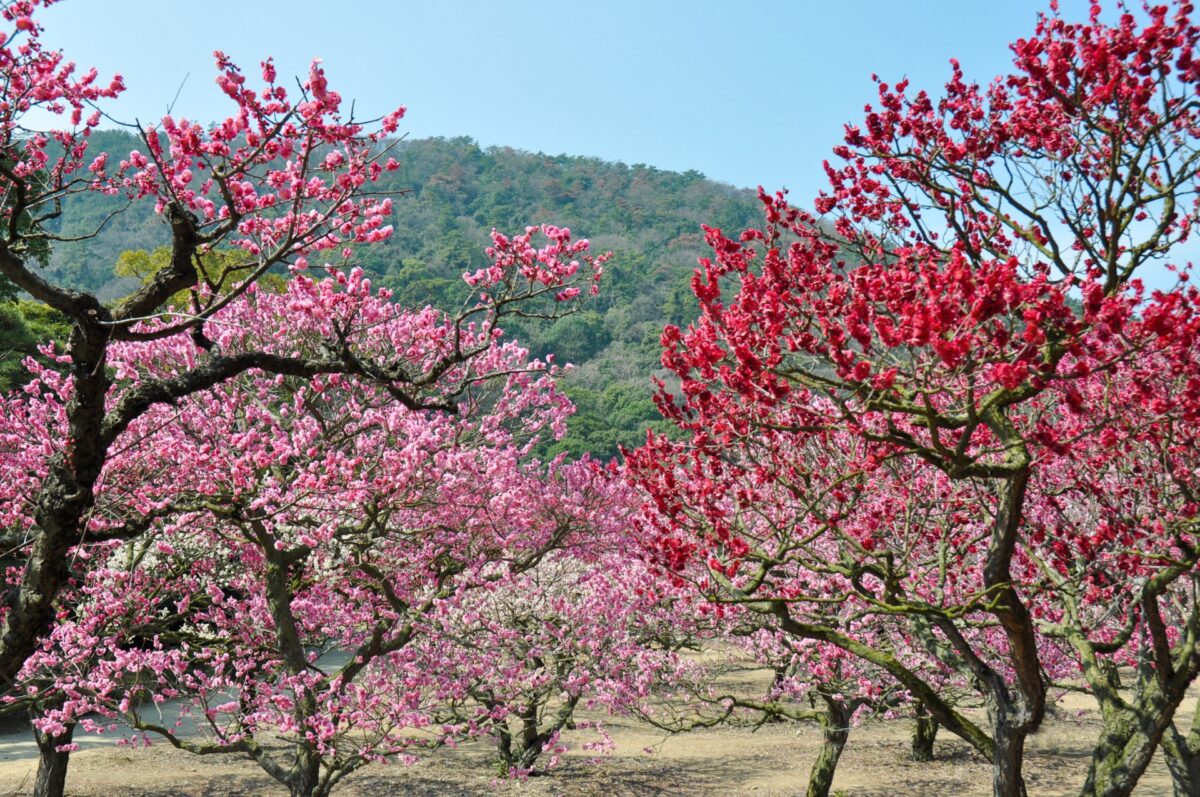
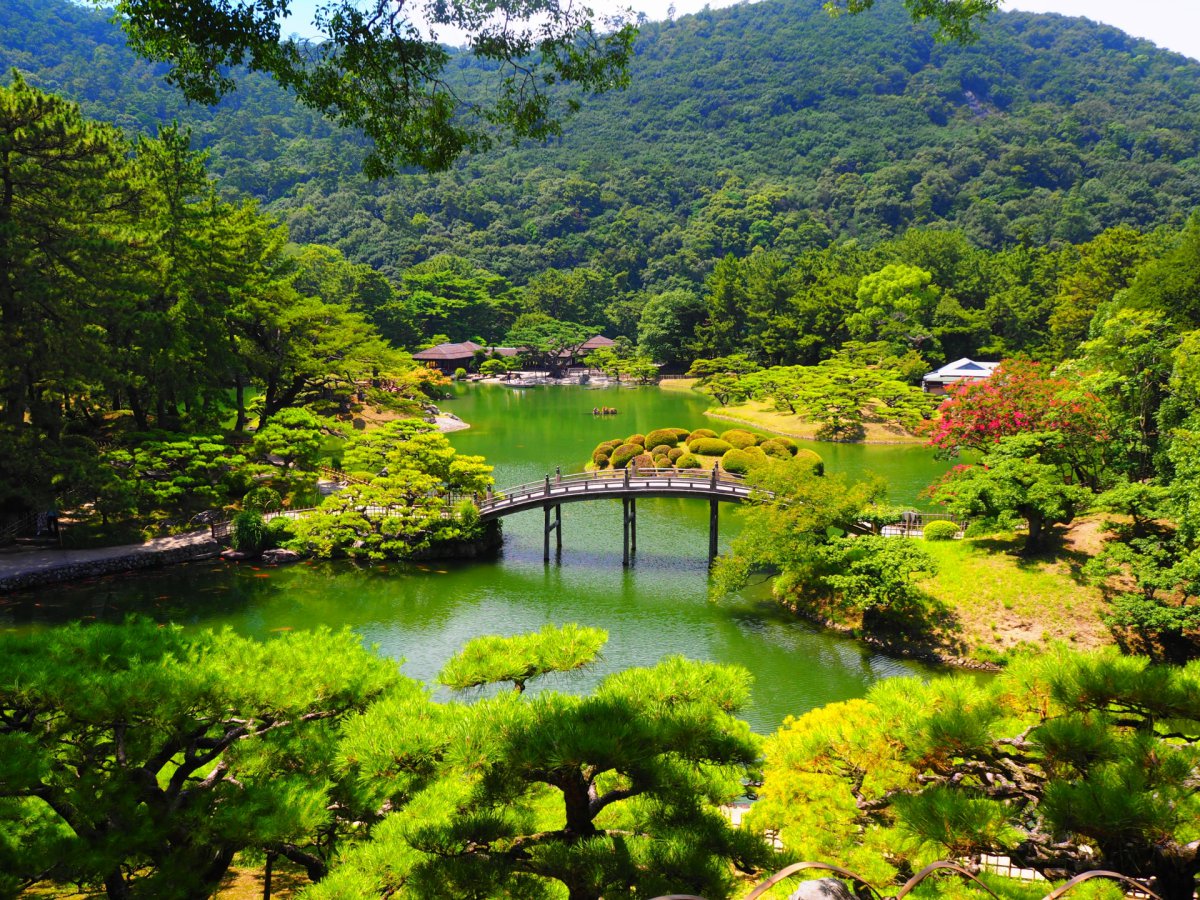
How to get to Ritsurin Garden
From JR Takamatsu station, take the JR Kotoku Line to Ritsurin-koen Kitaguchi. It is about a 2min walk to Ritsurin Garden.
10. Furo-en Plum Garden (Yamanashi)
Furo-en Plum Garden is a small garden located on the side of a small hill near Mt. Fuji. This garden is another place known for their beautiful plum blossoms. Walking around the garden you will be surrounded by the sweet and refreshing plum aroma from more than 3,000 plum blossom trees of 20 different varieties. There are several short hiking trails that you can take and enjoy the sight of the plum trees with the snow-capped Mt. Fuji in the background.
Furo-en Plum Garden 2023
February 1 – the end of March
9am – 5pm
Admission fee ¥500
Best time for plum blossoms: mid-February to mid-March
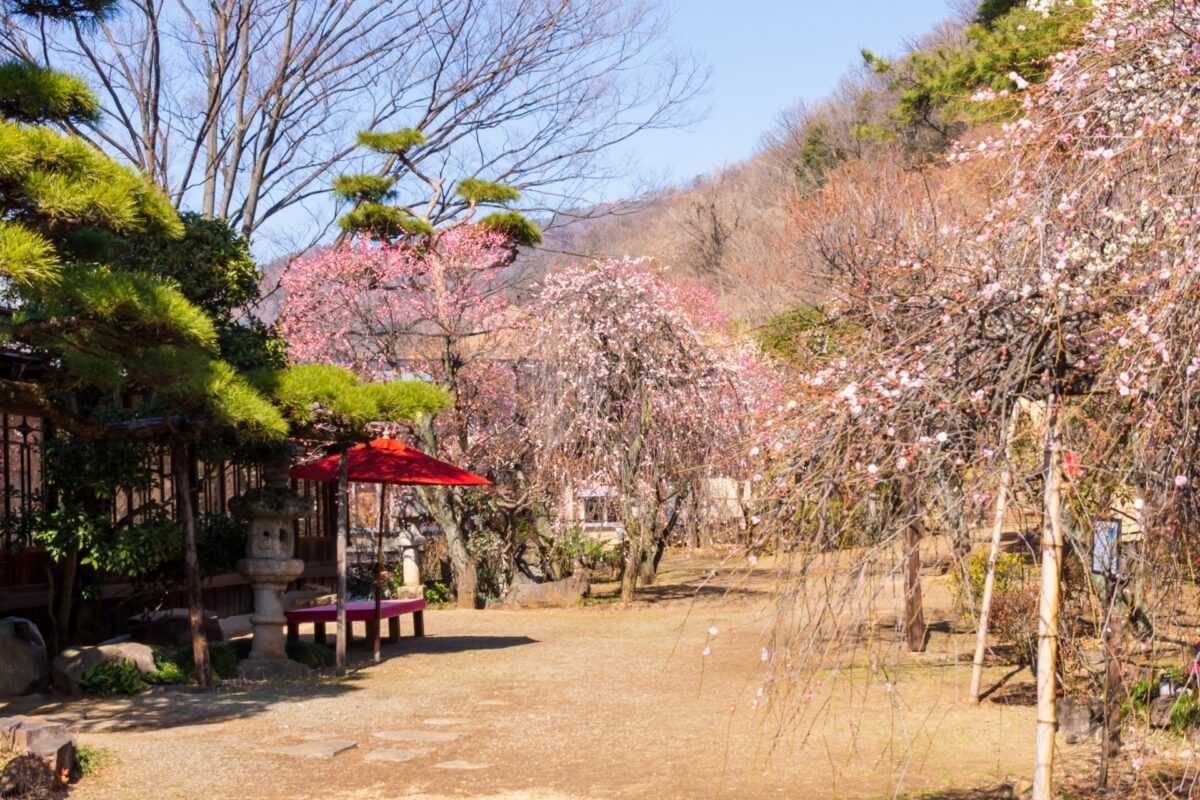
How to get to Furo-en Plum Garden
From the nearest train station Sakaori Station, the gardens are a 10 minute walk.
11. Dazaifu Tenmangu Shrine(Fukuoka)
Dazaifu Tenmangu Shrine is a Shinto shrine in Fukuoka prefecture that is built over the grave of Sugawara no Michizane and is one of the main shrines dedicated to Tenjin. It is well known for its beautiful plum blossoms, with over 6,000 trees in total. However, there is one very special tree at the shrine that is called the “Tobiume”, or flying plum tree. Legend has it that long ago, having been separated from Michizane, who dedicated many poems to his favorite plum trees, this tree couldn’t bear it and flew all the way from Kyoto to Fukuoka where it still is today. It is also said that Tobiume is always the first plum tree to bloom in all of Japan. Dazaifu Tenmangu Shrine spans over 12 km square and is an amazing place to visit whether you are there during the plum season or not.
Dazaifu Tenmangu Shrine
6:30am – 6:30pm
Free admission
Best time for plum blossoms: Late January to early March
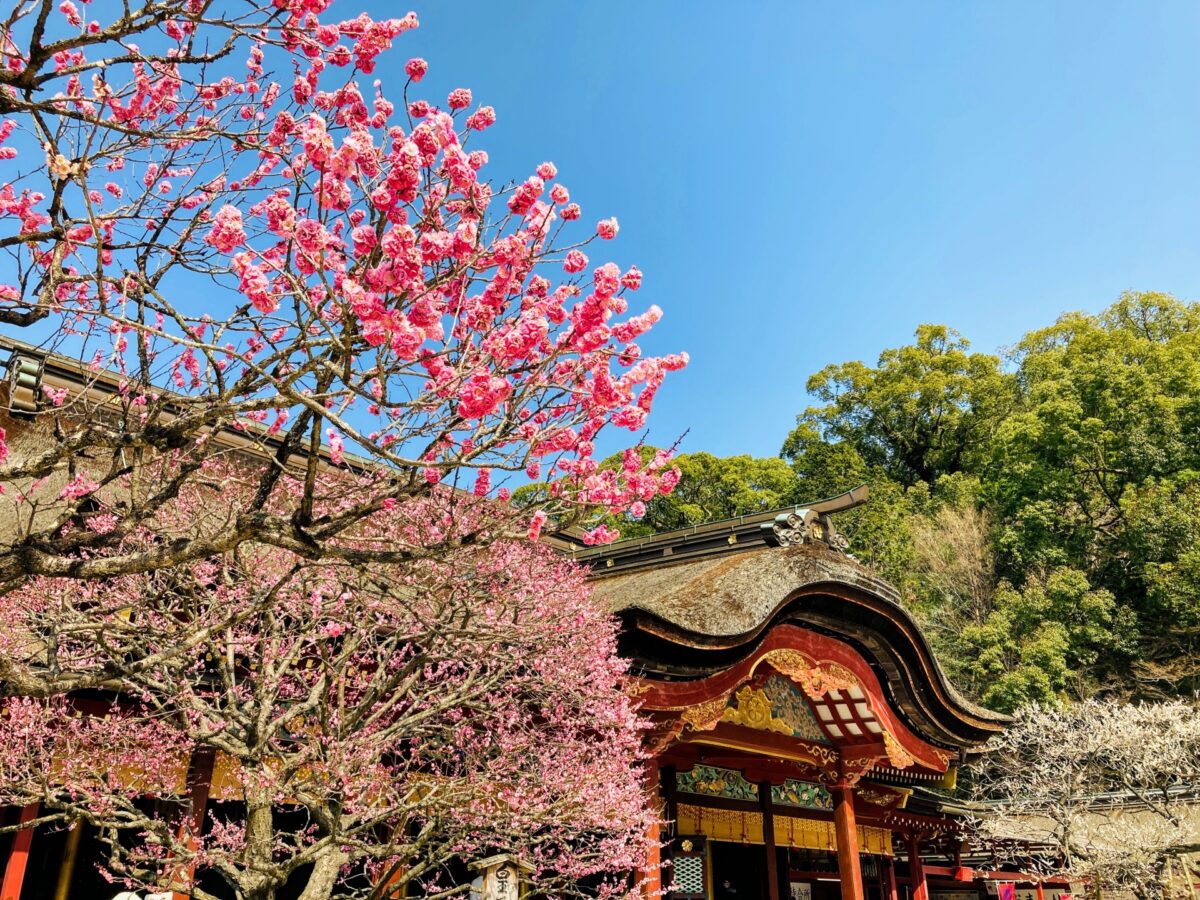
How to get to Dazaifu Tenmangu Shrine
You can take a bus directly from Hakata station to Dazaifu, or take the JR Kagoshima Line from Hakata Station to JR Futsukaichi Station(15-25 minutes), and then take the Nishitetsu Dazaifu Line from Nishitetsu Futsukaichi Station to Dazaifu Station(5 minutes)
Plum Blossom Viewing Spots in Tokyo
12. Yushima Tenjin
If you live in Tokyo and are looking for a plum blossom viewing experience nearby, head to Yushima Tenjin (also known as Yushima Tenmangu) located in Bunkyo-ward, Tokyo. This small Shinto shrine sits at the top of a slope in Tokyo’s Ueno district, near Ueno Park, and is visited by many students as it is dedicated to the god of scholarship and learning. However, not only do students wishing to pass exams visit the shrine, but it also attracts other visitors with its beautiful plum blossoms. The Bunkyo Plum Festival is held at the shrine from early February to early March. During the festival, visitors can try local specialties at small food stalls, enjoy Japanese drum performances, and view the spectacularly illuminated plum blossoms at night.
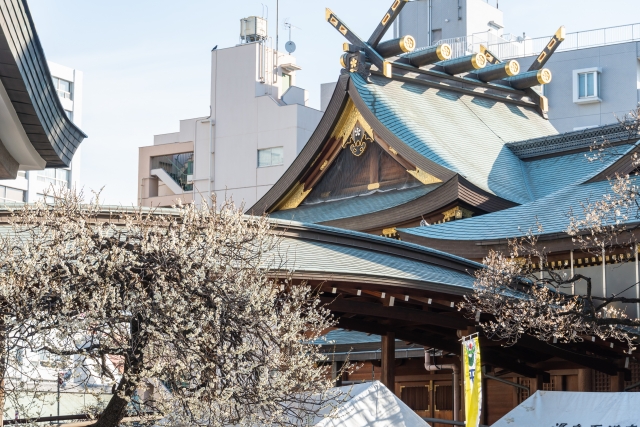
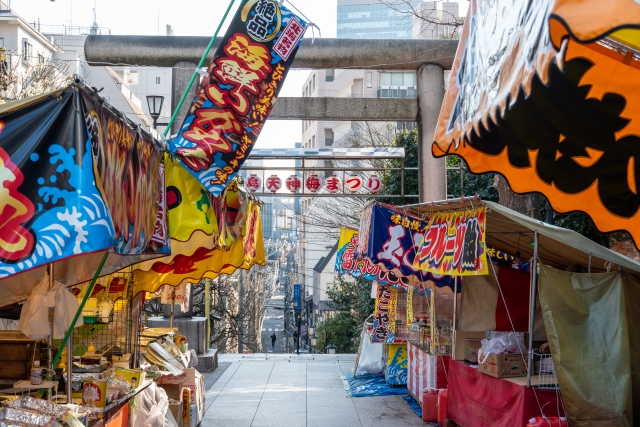
Yushima Tenjin
Best time for plum blossoms: early February to early March
Yushima Tenjin Plum Festival 2024
February 8 – March 8
How to get to Yushima Tenjin
It is a few minutes’ walk from Yushima station on the Tokyo Metro Chiyoda Line
13. Ikegami Plum Garden
Ikegami Plum Garden, or Ikegami Baien, is another great spot in Tokyo to see the plum blossoms in early spring. Here you can find over 370 plum trees spread over at least 30 different types of trees. The garden itself is large and was originally the studio of an artist before it was turned into a public area. When entering the garden, you will be welcomed by a hill covered with vibrant plum trees, as well as two traditional Japanese houses, both with their own tearooms. This year from February 17 to March 5 they will be doing a night light up which makes for an even more magical atmosphere.
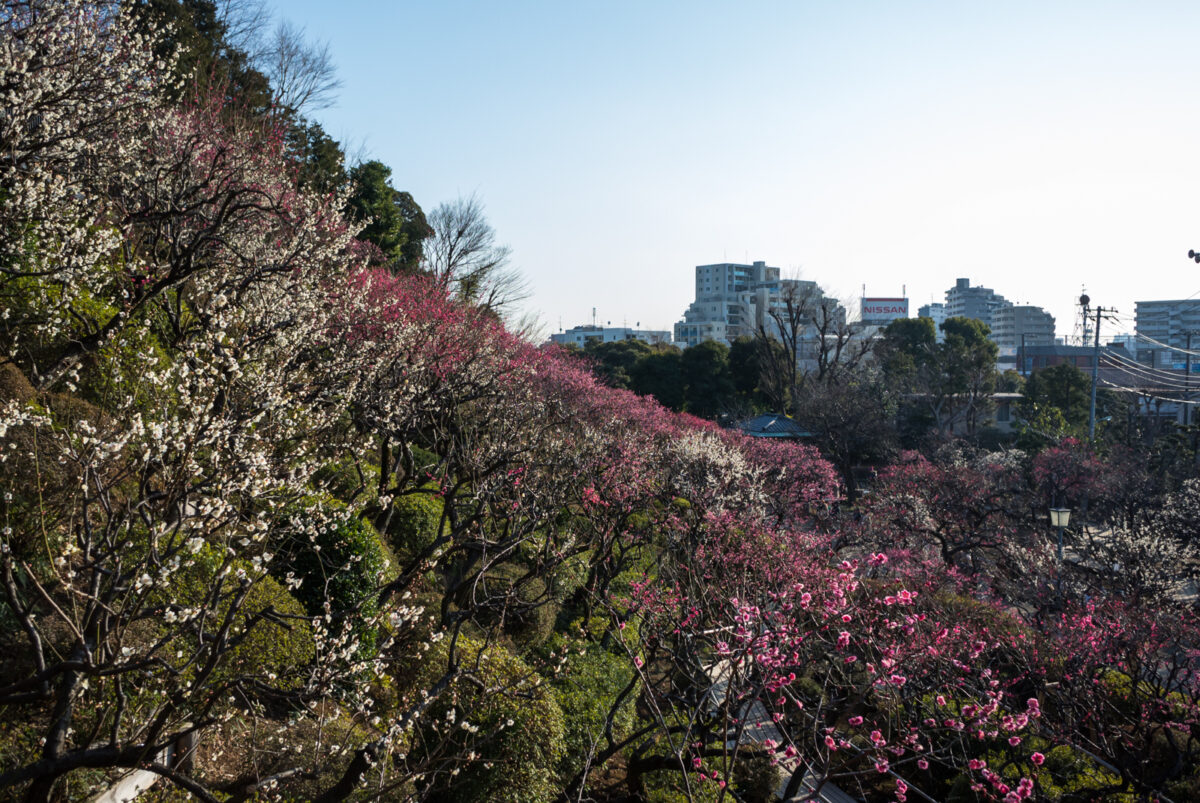
Ikegami Plum Garden
9am – 4:30pm everyday in February and March. Light up event until 8pm
How to get to Ikegami Plum Garden
Closest station is Nishi-magome Station, on the Asakusa Line, about a 10 min walk to the garden
14. Kameido Tenjin Shrine
You may have heard of various different Tenjin shrines throughout Japan, and people often make a trip to these shrines when they are hoping for success in exams. Kameido Tenjin Shrine is probably most famous for its beautiful purple wisteria that bloom in spring. However they also have over 300 plum trees that are also truly a sight to see come February and March.

Kameido Tenjin Shrine
6am – 5pm everyday
How to get to Kameido Tenjin Shrine
15 minute walk from Kameido station on the JR Sobu Local Line
15. Jindai Botanical Garden
Jindai Botanical Garden has their very own plum festival that is held in February and March every year. The whole atmosphere of the park changes as the plum trees bloom into pink, purple and white blossoms. They have about 210 trees in 70 or so different varieties to make for a wonderful and calming ambiance.
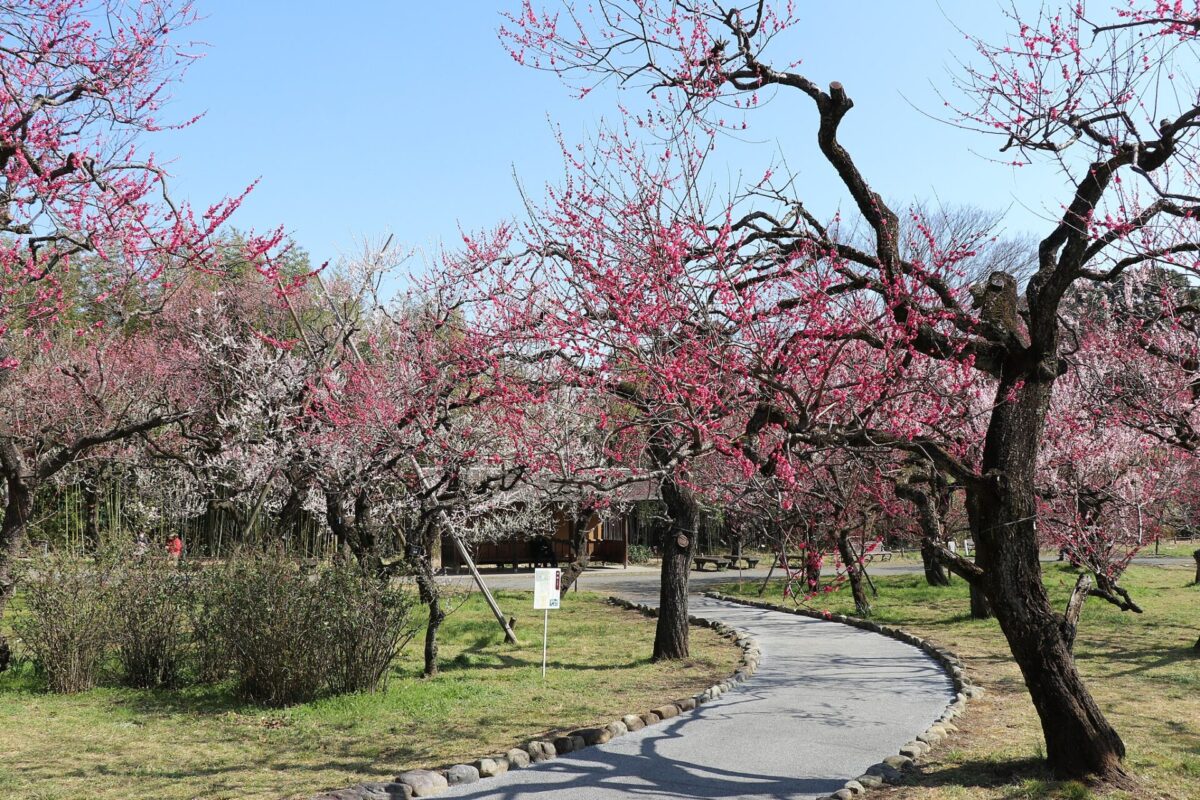
Jindai Botanical Garden
9:30am – 5pm (Closed on Mondays)
Jindai Plum Festival
February 14 – March 3
How to get to Jindai Botanical Garden
Chofu Station is the closest station to Jindai Botanical Garden, and is about a 15 minute train ride from Shinjuku Station
Since ancient times, plum blossoms have been loved by Japanese people. Although they originally came from China and were introduced to Japan around the late 3rd Century, it is now a big part of Japanese lives and is a symbol that reminds us of the arrival of spring before the cherry blossoms. If you have time to travel around Japan in early spring, don’t forget to visit the plum blossom spots introduced here above!
Japan Wonder Travel Tours
Japan Wonder Travel is a travel agency that offers guided tours throughout Japan.
From private walking tours to delicious Food and Drink tours, we can help you organize the best tours just for you! If you want to explore Japan and learn more about the history and backstories of each area you are visiting, our knowledgeable and friendly English speaking guides will happily take you to the best spots!
In addition, we can provide you with any assistance you may need for your upcoming trip to Japan, so please feel free to contact us if you have any questions or need some help!
▶Tokyo Tsukiji Fish Market Food and Drink Tour
Explore the most lively and popular fish market in Tokyo and try some of the local’s favorite street foods and sake with one of our friendly and knowledgeable English speaking guides!

▶Tokyo 1–Day Highlights Private Walking Tour (8 Hours)
There’s no better way to explore an area than taking a tour with a knowledgeable local guide. You will have the chance to learn about the history and interesting background stories of Tokyo, as well as discover some hidden gems which can be hard to do without a guide.

▶Mt. Fuji Day Trip Bus Tour from Tokyo
Experience the breathtaking views of Mt. Fuji by visiting the highlights of the area on our guided sightseeing bus tour! Departing from Shinjuku in central Tokyo, you can travel comfortably to all of the best spots in the area by bus.

▶Kyoto Private Full Day Walking Tour
On this full-day private tour of Kyoto, you will be able to see the highlights of Kyoto in just one day and at the same time develop a deeper understanding of both the culture of the area and Japan as a whole.

Follow us on Instagram, Facebook and Twitter for more travel inspiration. Or tag us to get featured!
Happy traveling!
